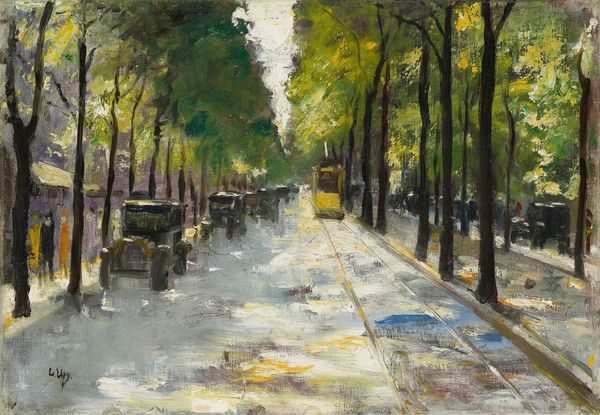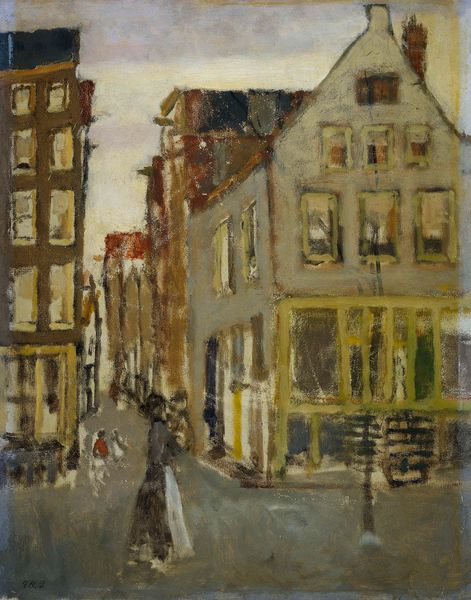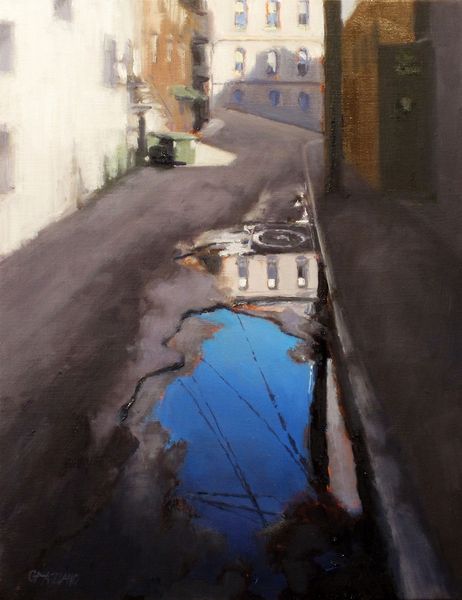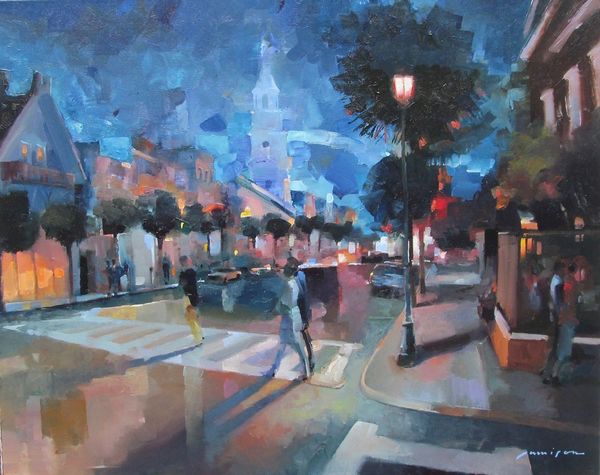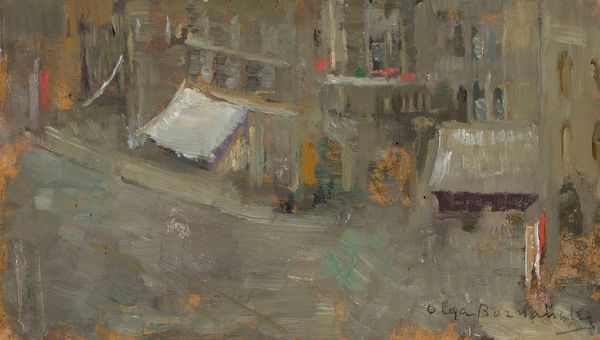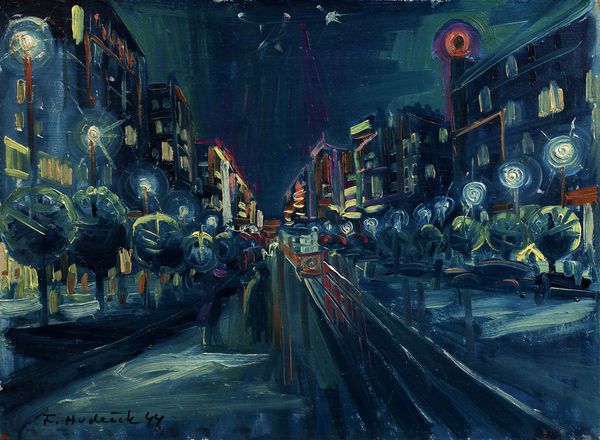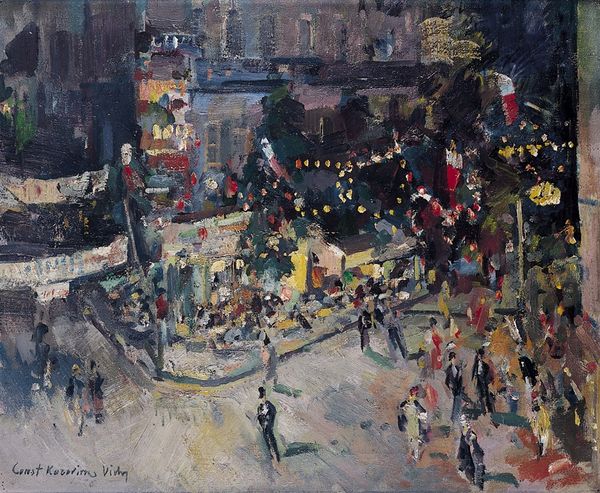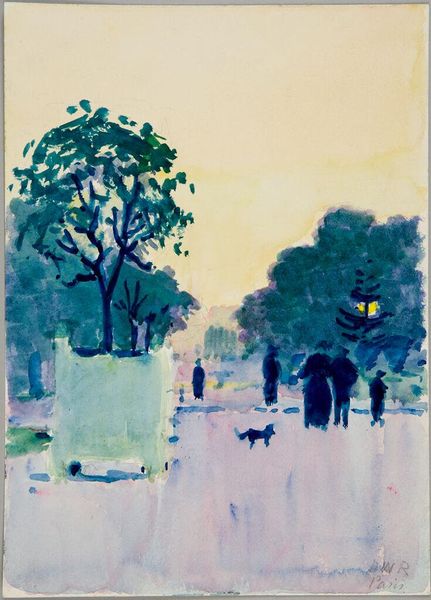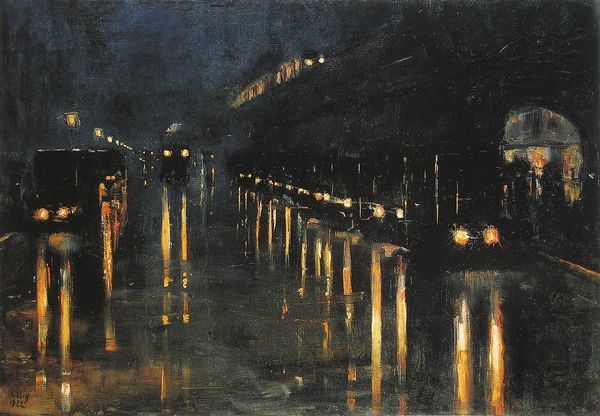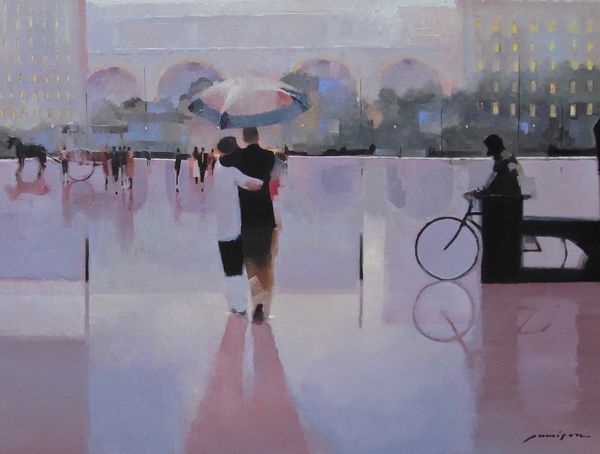
Copyright: Public domain
Editor: Lesser Ury’s “Nollendorfplatz bei Nacht,” created in 1889 with oil paints, just pulls you right into this rainy night scene. The way the light reflects off the wet streets gives such a unique atmosphere. What do you see in this piece that stands out in terms of its historical context? Curator: This painting is really fascinating because it captures a slice of life in Berlin at a time of massive urbanization and social change. Ury is portraying a newly electrified city – notice how the gas lamps and emerging electric lights illuminate the darkness. This evokes both progress and a sense of alienation that defined modernity. Editor: So, it’s not just a pretty cityscape, it’s commenting on something deeper? Curator: Exactly. The 'street photography' tag is telling. Think about who is being represented in this picture, and perhaps more importantly, who is *not* being represented. Where are the politicians? The upper classes? Who inhabits the streets at night, when the social hierarchy begins to soften? This artwork becomes part of a larger visual discourse on class and public space. Do you notice how Ury uses brushstrokes and light to either reveal or obscure details? Editor: Now that you mention it, the figures are very indistinct and blend into the darkness. It's almost like they are ghosts in the modern world. That's different from idealized figures that were common in paintings until that time. Curator: Precisely! And that aesthetic choice is a political one, too. Think about who was in control of exhibiting artworks such as this, and whether their agenda aligned with the message in this painting. What do you make of its style in the context of that tension? Editor: It gives me a whole new perspective on impressionism to see it as more than just capturing light and atmosphere. Curator: And it’s worth considering that those atmospheric effects were only *just* being made possible. Street lighting changed public life enormously. Editor: It's amazing how one painting can reveal so much about a specific moment in history. Thanks! Curator: Indeed, seeing art in its socio-political context adds a richer dimension to our understanding and appreciation.
Comments
No comments
Be the first to comment and join the conversation on the ultimate creative platform.
